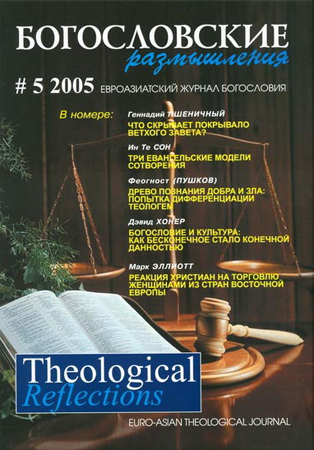What Does the Old Testament Veil hide?
Keywords:
Old Testament Veil hide, Paul’s attitude toward the Old Testament, 3rd chapter of 2 CorAbstract
At a cursory reading of 3rd chapter of 2 Cor one can get an impression that in this passage Paul opposes scriptures of Old and New Testaments. It seems that one has obvious advantages over the other. One is still covered by the veil, while the other allows one “with unveiled face to reflect the Lord”s glory.” However, detailed study of this passage reveals step by step that Paul was trying to convey somewhat a different idea. His emphasis is on the fact that the veil lies over the heart of the one reading the scriptures, and therefore it hides something from him in the scriptures. What kind of veil is it and what does it hides? This article is seeking to investigate these questions. The author not only explains the meaning of the veil, but also reveals Paul’s attitude toward the Old Testament. Besides of that, one of the author’s goals in the course of this analysis is to demonstrate, that answers on the raised questions show up in a correctly determined context. Failure to determine context correctly entails the wrong interpretation of the passage.
References
- Barret, Charles Kingsley. The Second Epistle to the Corinthians. London: Hendrickson, 1973.
- Belleville, Linda L. “Reflections of Glory: Paul’s Polemical Use of the MosesDoxa Tradition in 2 Corinthians 3:1–18”. Sheffield: JSOT, 1991.
- Black, David Alan. Linguistics for Students of New Testament Greek: A Survey of Basic Concepts and Applications. Grand Rapids: Baker Books, 1995.
- Childs, Brevard S. Biblical Theology of the Old and New Testaments: Theological Reflection on the Christian Bible. Minneapolis: Fortress, 1993.
- Earle, Ellis E. Paul’s Use of the Old Testament. Edinburgh: Oliver and Boyd, 1957.
- Friesen, Isaac I. “The Glory of the Ministry of Jesus Christ: Illustrated by a Study of 2 Cor 2:14–3:18.” Th. D. diss., University of Basel, 1971.
- Gabelein, Frank E., General Ed. Expositors Bible Commentary, vol. 10. Grand Rapids: Zondervan, 1990.
- Hafemann, Scott J. Paul, Moses and the History of Israel: The Letter/Spirit Contrast and the Argument from Scripture in 2 Corinthians. Peabody, Mass: Hendrickson, 1996.
- MurphyO’Connor, Jerome. The Theology of the Second Letter to the Corinthians. Cambridge: Cambridge University Press,
Downloads
How to Cite
Issue
Section
License
Copyright (c) 2020 Gennady PSHENICHNY

This work is licensed under a Creative Commons Attribution-NonCommercial 4.0 International License.
All articles published in the Journal are distributed under a Creative Commons Attribution-NonCommercial 4.0 International License
By submitting an article for publication in Theological Reflections: Eastern European Journal of Theology the author grants the editors the right to publish the article and distribute it in electronic and print form.
The author reserves all copyrights and the right to use the materials of the article in whole or in part for educational purposes, to write his own dissertations, to prepare abstracts, conference reports, oral presentations, etc., as well as post electronic copies of articles (including the final electronic version downloaded from the journal’s official website) on non-commercial web-resources without the consent of the editorial board and founders.



